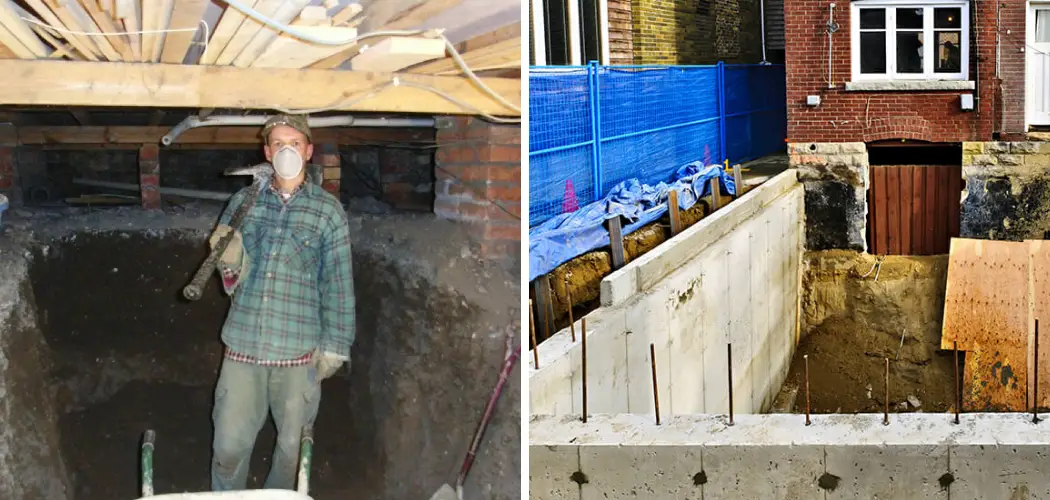Are you looking to add more space and value to your existing house? Digging out a basement is one great way of achieving both goals. Not only does it provide additional living or storage space, but it can also increase the overall worth of your home. It is important to know how to dig out a basement in an existing house.
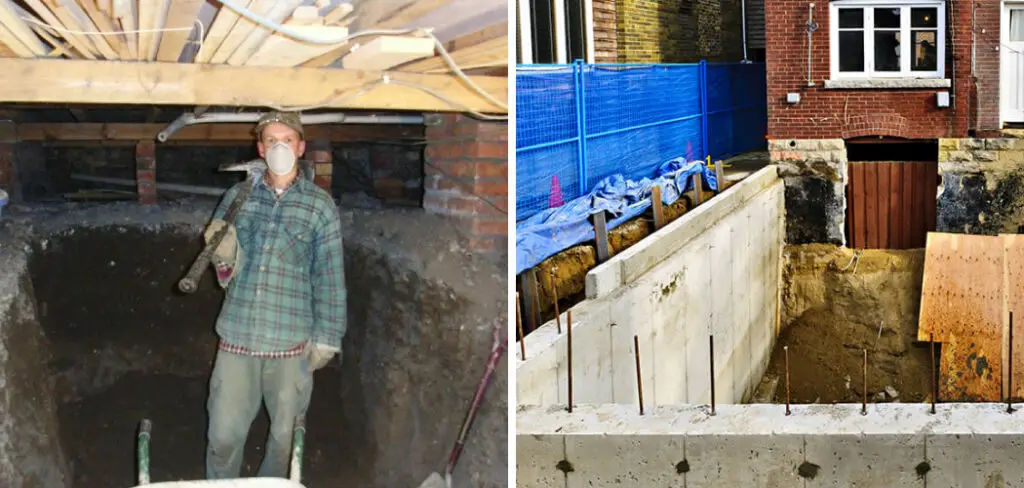
But before you start digging, some considerations need to be made and steps must be taken for this ambitious project to go off without a hitch! In this post, we’ll cover all the basics when it comes to digging out a basement in an existing house, including site preparation, excavation techniques, foundation installation, and much more. So read on if you’re considering digging out a basement soon!
Tools You Will Need
Before you get started, it’s important to have the right tools for the job. The tools and supplies you will need depend on the size of your project, but at a minimum, you should have
- A shovel,
- Pickaxe,
- Level,
- Trowel,
- Sledgehammer,
- Safety goggles/gloves/mask,
- Water hoses, and
- A wheelbarrow.
You may also need additional tools such as concrete saws, tamping tools, and a vibrating compactor.
A Short Overview
Site Preparation:
Before you start digging out your basement, it’s important to determine the location of any existing utilities, including gas lines, water mains, sewer pipes, and electric lines. You should also remove any vegetation, trees, or landscape material from the area where you will be digging. Be sure to take pictures of the site beforehand for your records.
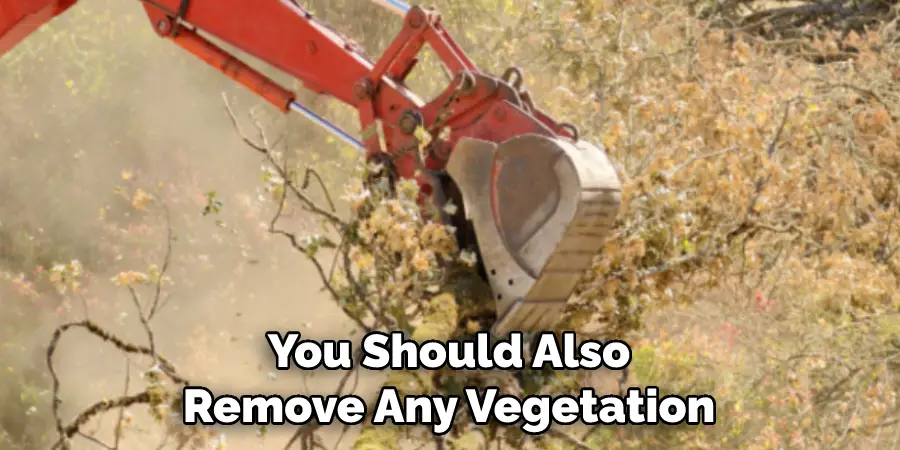
Excavation:
Once all necessary preparations have been made, you can begin excavation. This is probably the most difficult part of the process and should only be done by those with experience. Be sure to dig down in a safe and controlled manner, taking the appropriate safety precautions. You may also need to use heavy machinery for large projects.
Foundation Installation:
Once the required depth has been achieved, you can move on to installing your foundation. Depending on the soil type and the size of your project, you may need to support the foundation with concrete footings. You should also consider waterproofing your basement or installing drainage pipes to prevent water damage and mold buildup.
Interior Work:
Once you’ve completed all necessary exterior work, it’s time to start on the interior of your basement. This involves installing framing, drywall, insulation, and plumbing or electrical systems as needed. It may be helpful to consult a professional at this stage if you are unsure how to proceed.
Finishing Touches:
Finally, once all the interior work has been completed, it’s time to do the finishing touches. This includes painting, tiling, carpeting, and any other aesthetic touches you may want. You can also install furniture and fixtures at this point if desired.
Now Let’s Know the Details

6 Steps on How to Dig Out a Basement in an Existing House
1. Gather the Necessary Tools and Supplies
Digging out a basement in an existing house is a complex task requiring the right tools and supplies. Before starting the project, it’s important to locate any underground utility lines and research relevant regulations and permits; this will provide a better understanding of what needs to be done.
Additionally, depending on how big the excavation will be, tool rental centers should be contacted for specialized machinery like mini-excavators that can dig deep enough for underground levels. Safety equipment such as face masks, gloves, protective clothing, welding helmets, and ear protection is also essential when digging out a basement.
Construction materials such as lumber, concrete blocks, or steel reinforcement bars may be necessary. Gather all these important tools and supplies before beginning the process and remember to include your level of enthusiasm—it won’t be easy but you can also share in the satisfaction once you have completed this difficult task!
2. Prepare the Site by Removing Vegetation
Putting in a basement in an existing home involves considerations beyond simply digging out the area. Before beginning excavation, it is important to prepare the site by clearing any vegetation and then marking any existing utilities like sinks, power lines, or septic tanks that might be hidden beneath the soil.
This prevents potential accidents or damage due to backfilling without being aware of those lines. By mapping out the underground infrastructure, you can have confidence that your project will go smoothly and safely while also ensuring its stability long-term.

3. Begin Excavation in a Safe, Controlled Manner
When beginning an excavation to create a basement in an existing house, it is important to do so with the utmost care and consideration for safety.
Ensure that these measures are taken at each step of the process, from selecting a reliable construction crew to ensure proper support within and outside of the structure, to providing noise-proofing for any nearby residences or businesses that may be affected by heavy machinery use on site.
All workers must utilize personal protective equipment (PPE) such as hard hats, steel toe boots, and appropriate work clothing when operating equipment. Most importantly, though not all necessary information can be anticipated ahead of time, thoroughly review plans with the construction team before beginning excavation and provide backup solutions in case revisions may have to be made during the project itself.
4. Install the Foundation
Installing the foundation for a basement dig-out in an existing house is a crucial part of the project. Depending on soil type and project size, certain specifications must be followed during the installation process to ensure the structural integrity and safety of your home.
Construction materials such as cinder blocks, concrete slabs, or poured concrete all have unique characteristics that would need to be considered before starting a project. It is especially important to inspect these components carefully to make sure they meet relevant load-bearing standards.
Additionally, costs for installation can vary greatly depending on the type of foundation chosen–making it even more important to research carefully before beginning any kind of construction.
5. Do All Necessary Interior Works
Digging out a basement in an existing house is a great way to add living and storage space to your home. It requires certain essential interior work like framing, drywall installation, and plumbing/electrical systems which can seem daunting at first, but with the right guidance and careful planning, they can be tackled.
Framing involves building up walls that will give watertight protection to the basement; plumbing and electrical components must also be well-installed for safe habitation. Skilled labor is recommended to ensure the proper function of all systems, whether it’s laying in floor joists or installing safety outlets correctly.
With the proper steps taken you can turn your basement into anything from a playroom for children to an extra bedroom for guests or even create extra living space for yourself or your family–all at once increasing the value of your home in addition to adding much-needed utility.
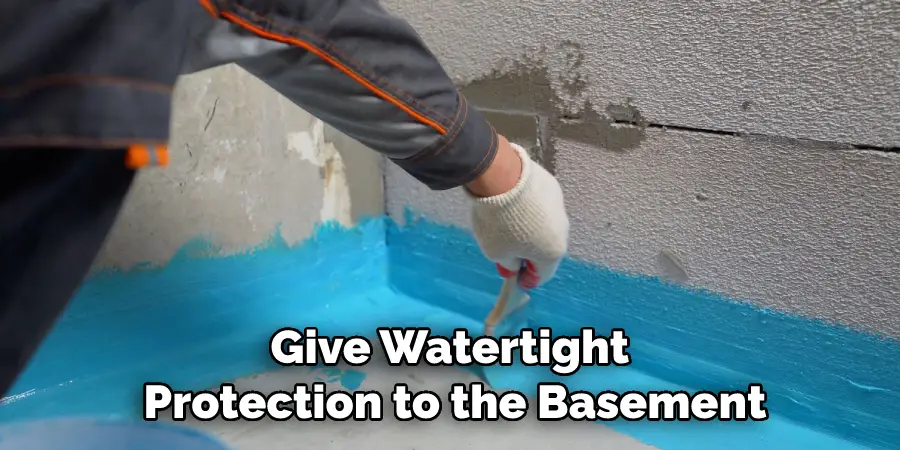
6. Finish With Aesthetic Touches
The basement is often the forgotten space in a house. It offers the potential for extra storage and a living area, however, finishing off this underground space is a whole other challenge. Painting, tiling, and furniture installation can all make a big difference to complete the transformation from bare walls to a functional room.
With careful consideration as to fixtures, fittings, and color scheme, such aesthetic touches will bring together the look you want to achieve in this part of your home. While there are many things to consider when making these changes – substrate material, lighting conditions, and working room dimensions – if the right decision is made design-wise it is sure to add value along with providing an attractive addition to your existing house.
Digging out a basement in an existing house is an ambitious project that can add value to your home and provide additional living or storage space. But before you start digging, several important steps need to be made, and safety measures that must be taken for this project to go off without a hitch!
Tips to Dig Out a Basement in an Existing House
- Before you start digging out your basement, it is important to decide on the purpose of the space. Will it be used as a living area, bedroom, home office, or storage space? Once you have decided on the purpose of the basement, you can start planning the layout and design of the space.
- If you are planning on digging out your basement, it is important to hire a structural engineer to assess the feasibility of the project. The engineer will need to determine if the existing foundation is strong enough to support the additional weight of a basement and if the soil around the house is stable enough to allow for excavations.
- Once you have hired a structural engineer and obtained their report, you will need to obtain permits from your local building department before starting any work. The permits will likely include a site plan that shows where you intend to dig and what type of foundation you will be using.
- Once you have obtained all of the necessary permits, you can begin excavating your basement. It is important to excavate carefully to avoid damaging the existing foundation or utilities. If possible, hand dig around sensitive areas such as utility lines.
- Once you have excavated your basement, it is important to install a drainage and waterproofing system to keep the space dry. The drainage system will collect any water that seeps into the basement and redirects it away from the house. The waterproofing system will prevent water from entering the basement through cracks in the foundation or walls.
- After the drainage and waterproofing systems have been installed, you can pour concrete walls and floor. It is important to use quality concrete mix and follow all instructions carefully to ensure that the concrete cures properly. Once the concrete has cured, you can finish off the space by adding the drywall and flooring of your choice.
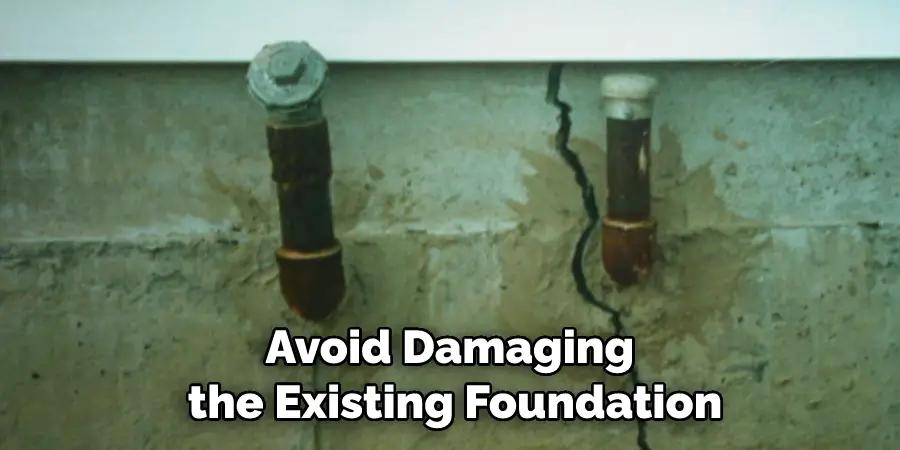
How to Prepare for and Excavate a Basement in an Existing Home?
If you’re looking to add additional square footage to your home by excavating the basement, you’ll find it’s a large and daunting task. Before getting started, preparation is key – from securing local permits to ensuring your contractors and materials are in place. Once approved, enlist the assistance of a professional excavator who can properly dig out the basement with specialized equipment such as buckets or vacuum loaders.
After deciding on the depth and size of your new basement, ensure that there is enough cement footing along each wall to support all the weight being held above it. Be sure to reinforce these areas with steel as this will provide added support and prevent any potential warping of areas around it.
Additionally, install waterproofing systems such as membranes and drainage tile which will effectively protect walls against trapped water or moisture buildup over time. Following these steps will help ensure a successful excavation of your newly expanded home!
Conclusion
Even if you’re not planning on adding a basement to your home, the process of excavating one can be interesting and informative. It can also give you a better understanding of your home’s foundation and how it was built. You should carefully determine how to dig out a basement in an existing house.
If you do decide to dig out a basement, there are a few things you should keep in mind. First, make sure you have the proper permits. Second, hire a professional engineer to assess the stability of your home’s foundation. And finally, be prepared for some mess and noise!

